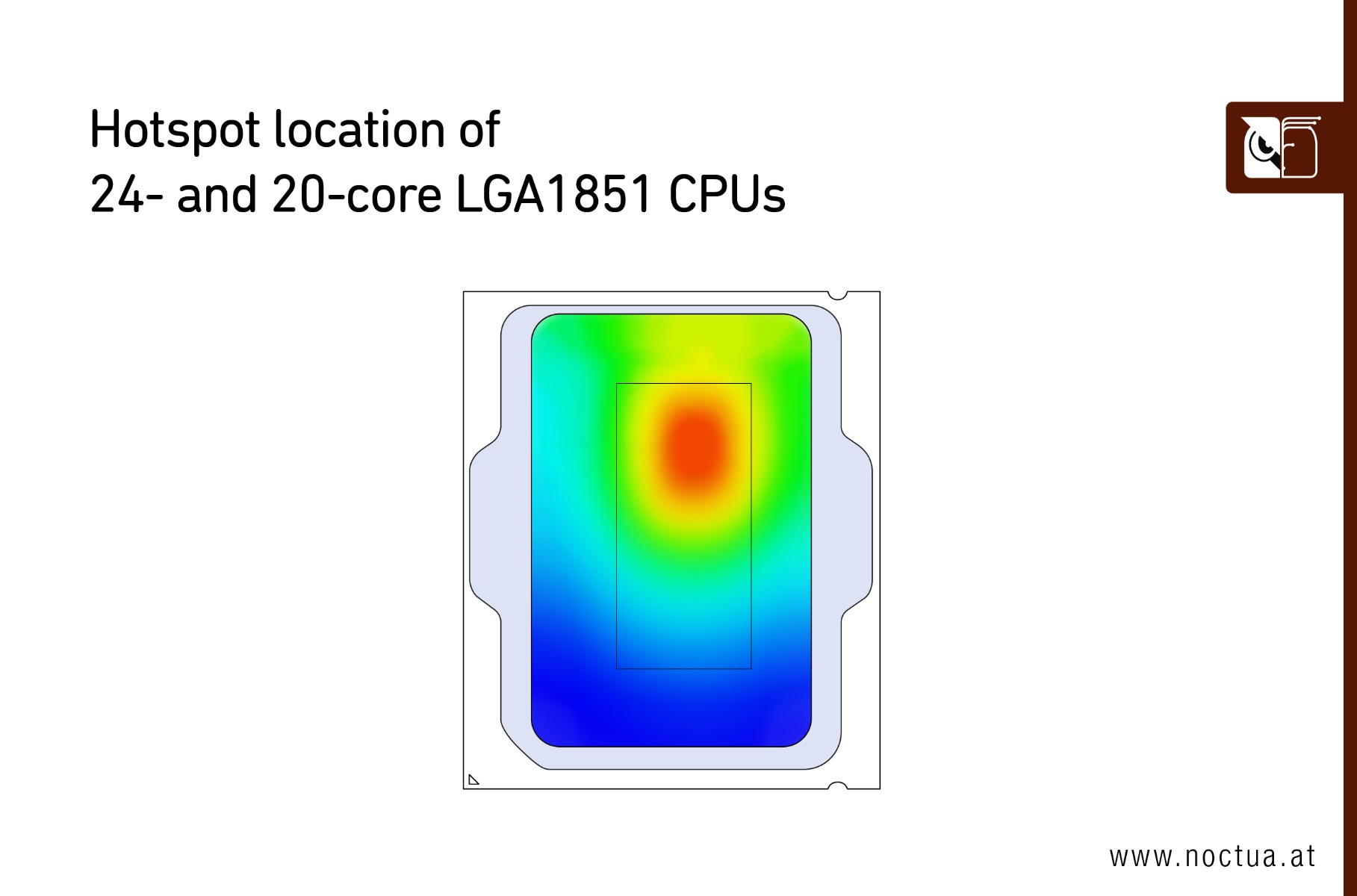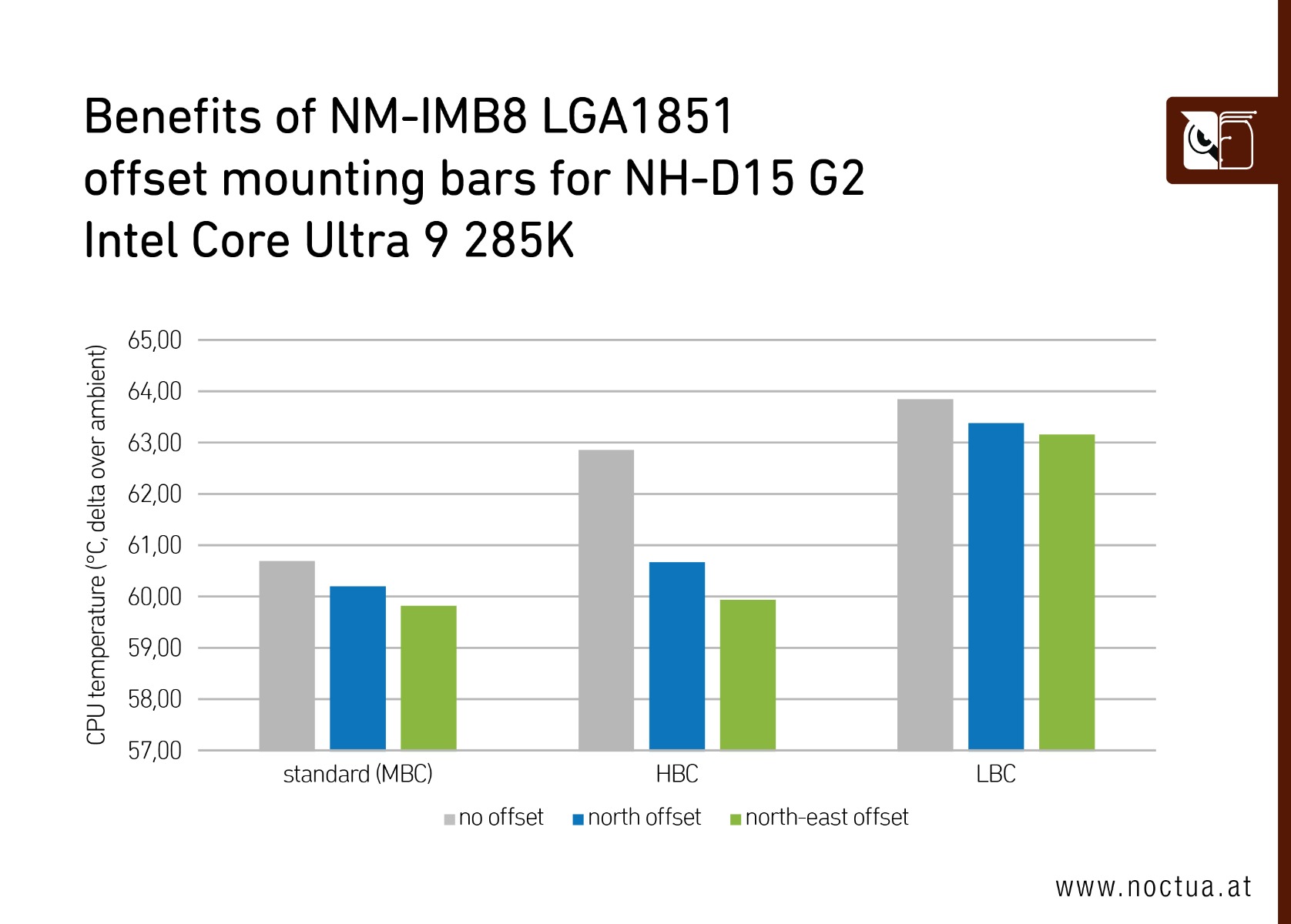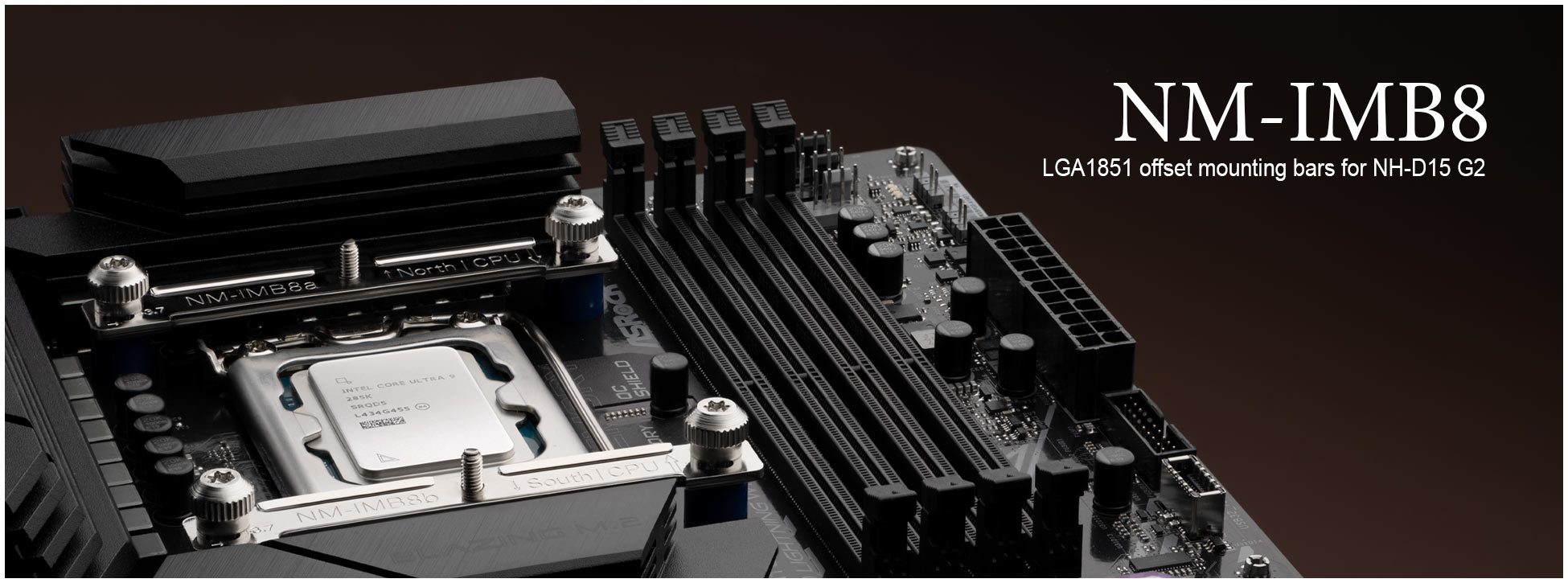LGA1851 offset mounting: background and benefits
Introduction
Intel LGA1851 CPUs with 24 or 20 cores such as the Core Ultra 9 285K or Core Ultra 7 265K feature a hotspot location shifted towards the north-east side of the package when running heavy multi-core loads. This off-centre hotspot location opens the door for cooling performance optimisation through shifting the cooler towards the hotspot in order to provide more concentrated contact pressure where it matters the most. 14-core LGA1851 CPUs such as the Core Ultra 5 245K, by contrast, have a relatively centric hotspot and therefore benefit less from offset mounting.
Mechanical background
While the hotspot location of 24-and 20-core LGA1851 CPUs is shifted 7.3mm towards the north side of the package, the LGA1851 socket is also shifted 0.8mm relative to the mounting holes, so the hotspot is only 6.5mm off-centre in relation to the heatsink that uses a standard, non-offset mounting solution. Additionally, the hotspot is shifted 1.85mm to the east side of the package. Noctua’s NM-IMB8 mounting bars enable to shift NH-D15 G2 coolers 3.5mm towards the north and 2mm towards the east in order to get them as close as possible to the centre of the hotspot. A further increased offset towards the north was not possible without making the mounting parts exceed the Intel keep-in-zone, which would cause compatibility constraints with many motherboards.

Benefits vary per base convexity
The benefits of offset mounting generally depend on the base convexity of the heatsink: A highly convex cooler will benefit more from having its small, concentrated area of contact right over the hotspot compared to a less convex heatsink that shows a larger, less concentrated contact pattern that may already cover the hotspot even without offset. When testing on an Intel Core Ultra 9 285K CPU, we have measured up to 3°C lower temperatures using the high base convexity (HBC) version of the NH-D15 G2, up to 1°C with the medium base convexity standard version and around 0.65°C with the low base convexity (LBC) version:

Interpreting the results, it must be noted that the medium base convexity standard version benefits less from the offset yet provides the best overall performance both with and without offset since it already shows very strong results even with the standard non-offset mounting.
This is due to the fact that the so called “Reduced Load ILM” (RL-ILM) used on most LGA1851 motherboards causes much less CPU warp than the LGA1700 ILM, so medium base convexity coolers like the standard NH-D15 G2 and all other Noctua multi-socket coolers provide excellent contact quality on LGA1851. The LBC version also benefits slightly from the offset but remains clearly inferior to the HBC and standard version due to its contact surface being too flat to achieve good contact on LGA1851.
NM-IMB8 cooler compatibility
The NM-IMB8 mounting bars have been primarily designed for NH-D15 G2 users who want to go the extra mile to squeeze out a little bit more performance on LGA1851. However, they can also be utilised for other Noctua heatsinks that use 78mm mounting pitch and require mounting points north and south of the socket, namely the NH-L12S, NH-L12Sx77, NH-L12 Ghost S1 edition and NH-D12L.
Using the NM-IMB8 mounting bars on other Noctua heatsinks with 78mm mounting pitch such as the NH-U12A, NH-U14S or NH-U12S is not recommended because they can only be installed in a 90° rotated mounting position, which causes inferior contact quality and an unfavourable exhaust orientation towards the top of the case.
The NM-IMB8 cannot be used with Noctua coolers that utilise 83mm mounting pitch such as the first-generation NH-D15 or NH-D15S. At this stage, there are no plans to provide offset LGA1851 mounting options for these coolers due to compatibility constraints and significantly more complex design requirements.
Summing it all up
In sum, the NM-IMB8 offset mounting bars are a significant upgrade for users of NH-D15 G2 HBC coolers who are transitioning from LGA1700 to 24- or 20-core LGA1851 CPUs. In this case, temperature gains of up to 3°C can be achieved. Additionally, NM-IMB8 bars can be a worthwhile upgrade for standard, medium base convexity NH-D15 G2 coolers if you simply want to achieve the best possible performance on a 285K or 265K processor: At up to 1°C, the gains aren’t as big as with HBC coolers, but due to the better overall contact pattern of the standard model, it remains the best choice for LGA1851, delivering excellent results even without offset and another slight performance boost when combined with the NM-IMB8 bars.
Your opinion matters!
We are excited to invite you to participate in our short website survey. It will only take 5 minutes of your time!




